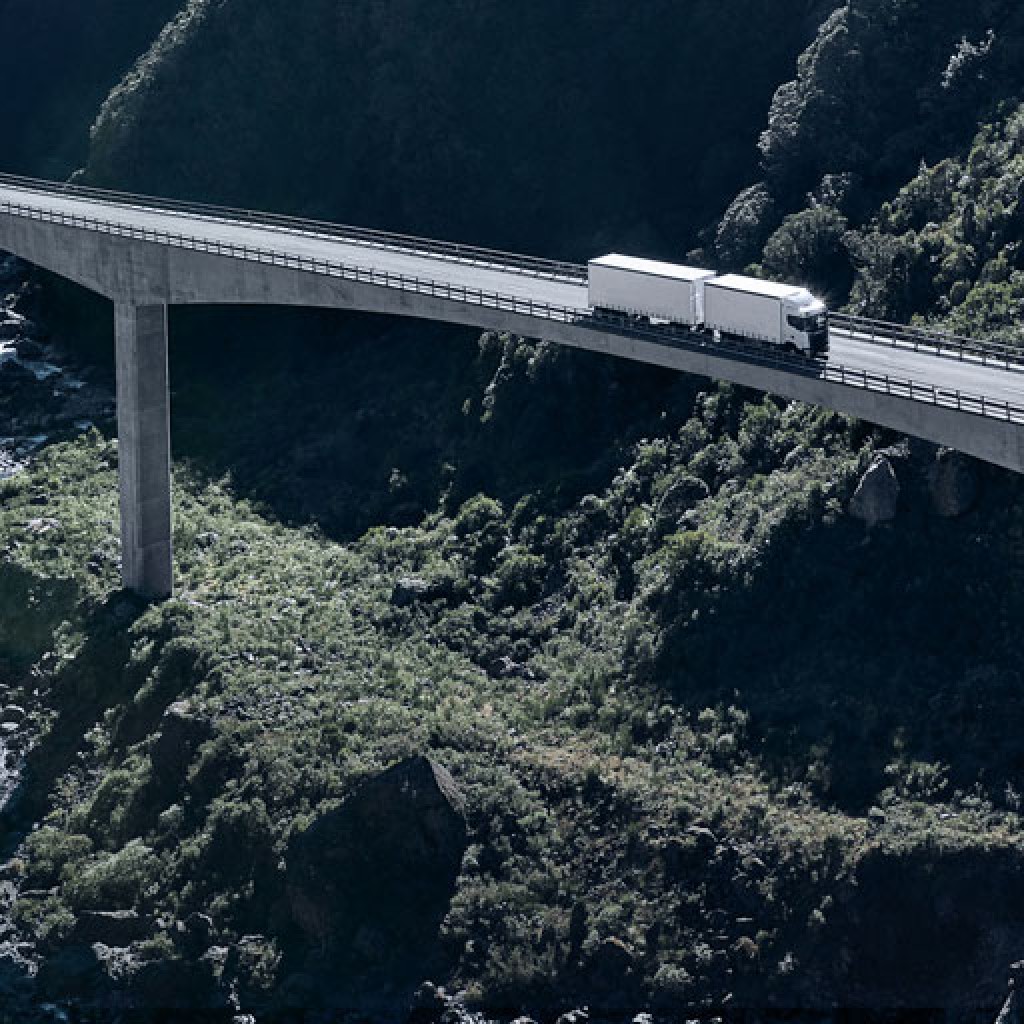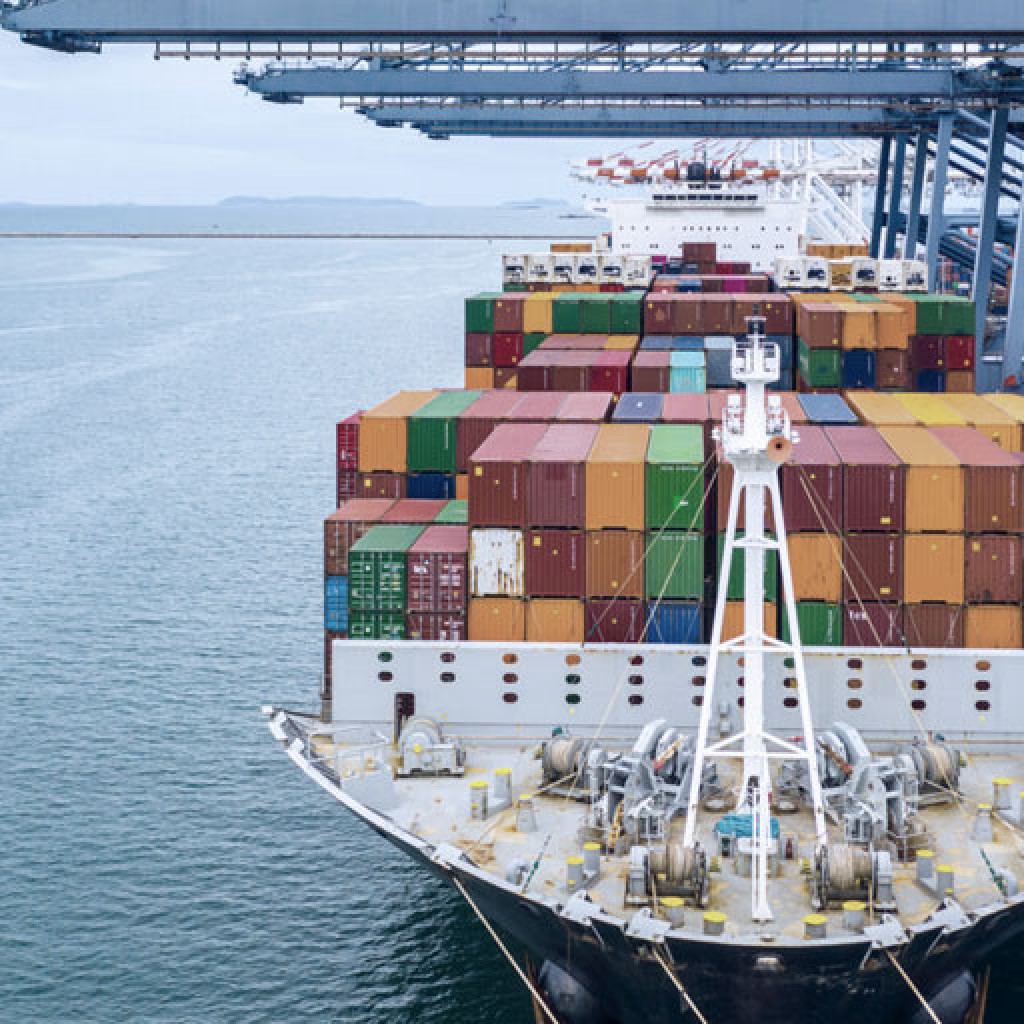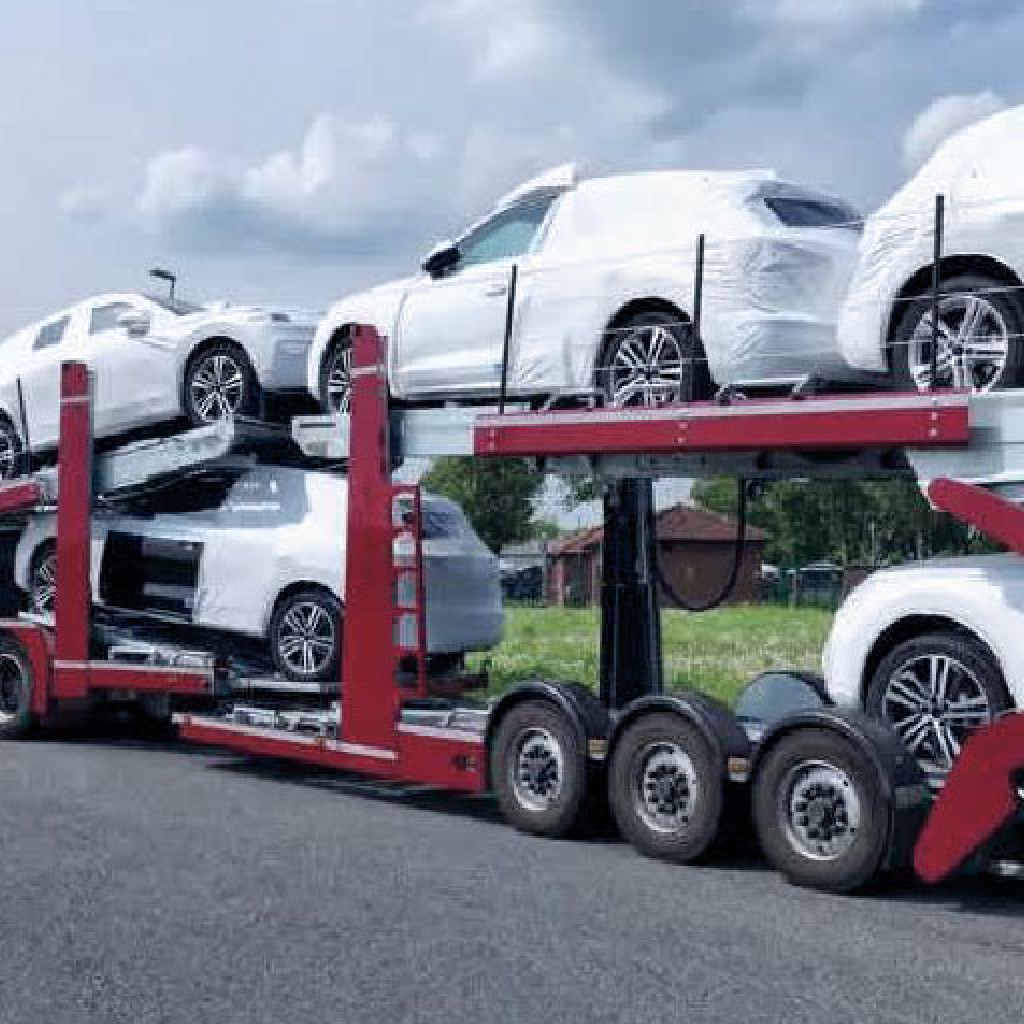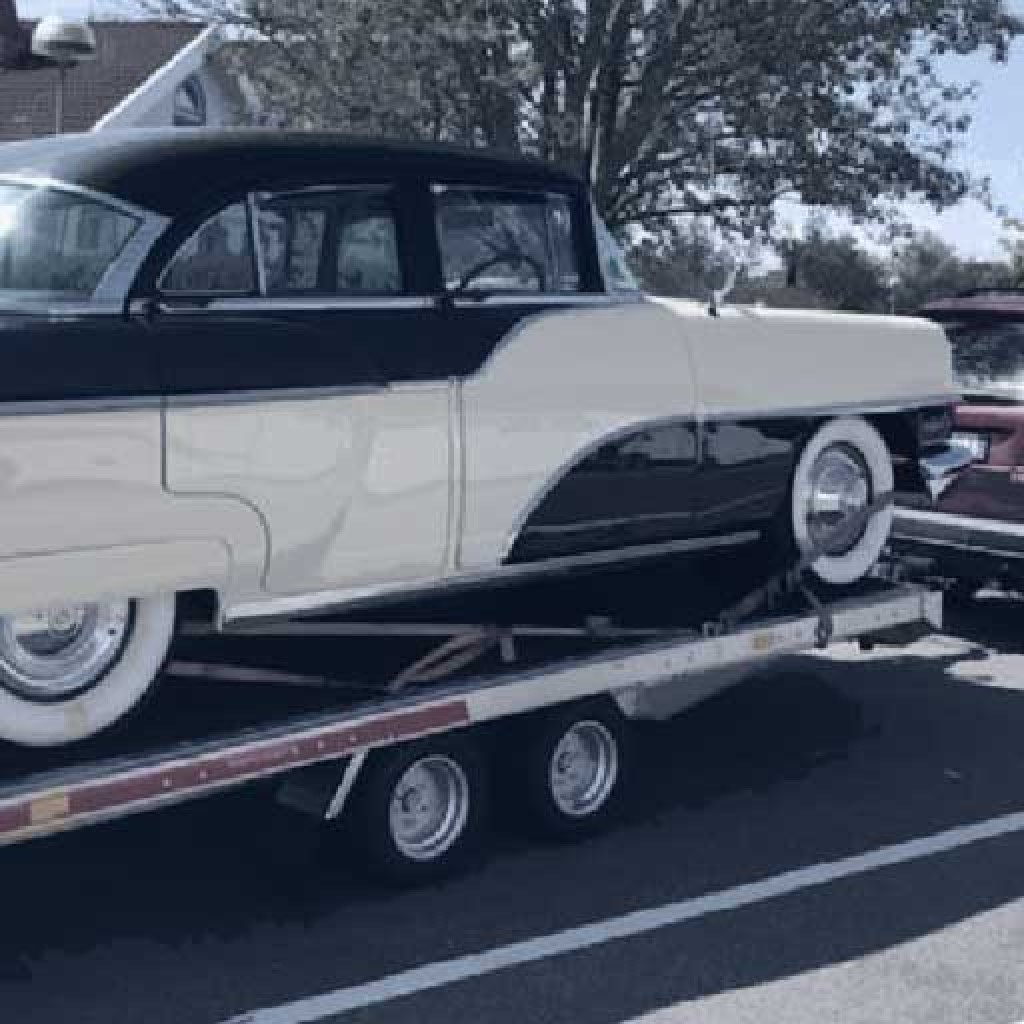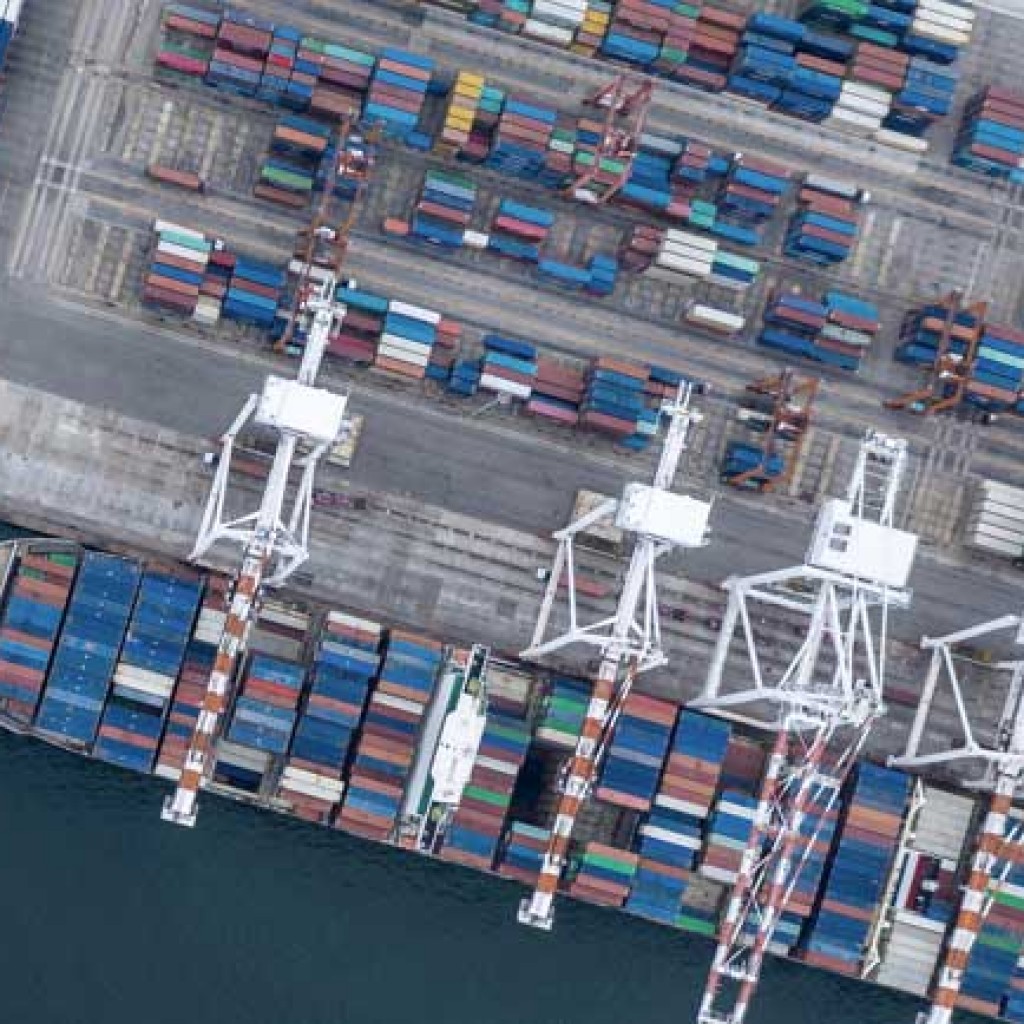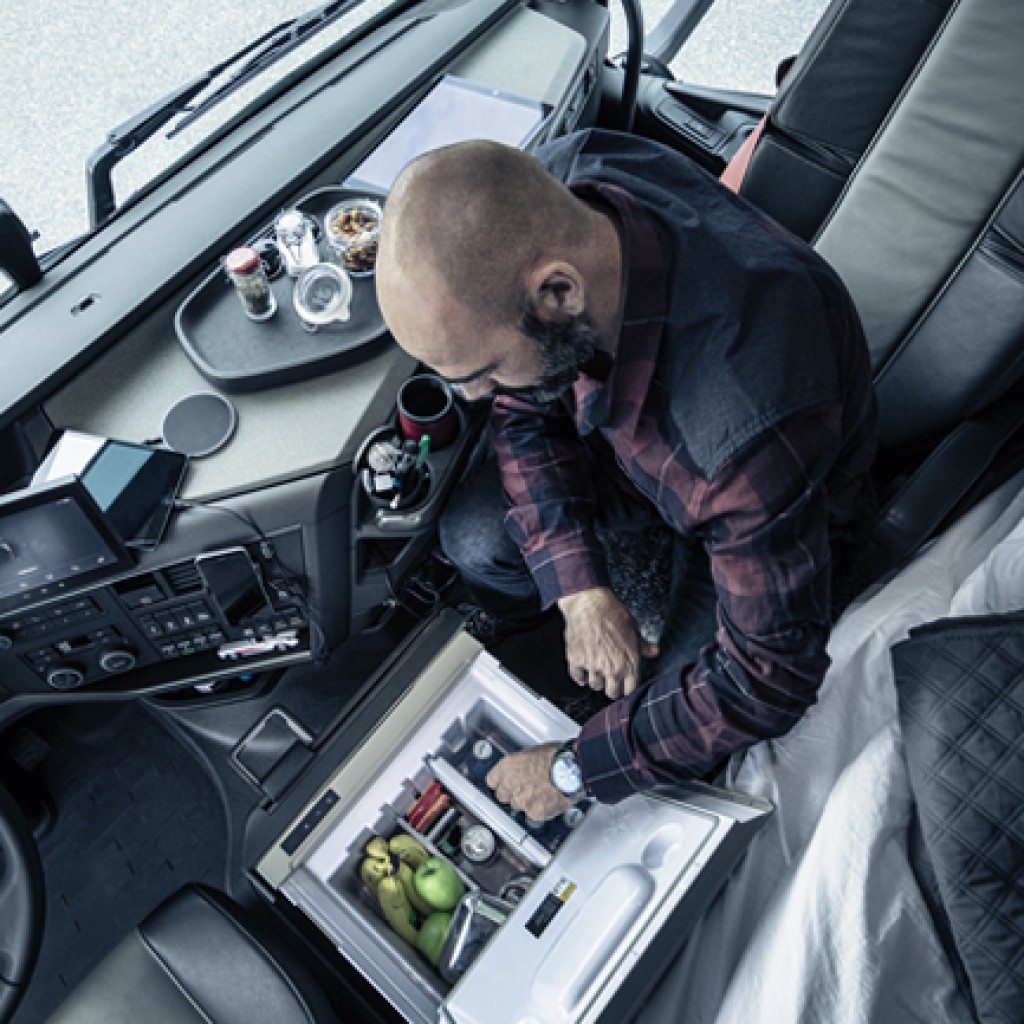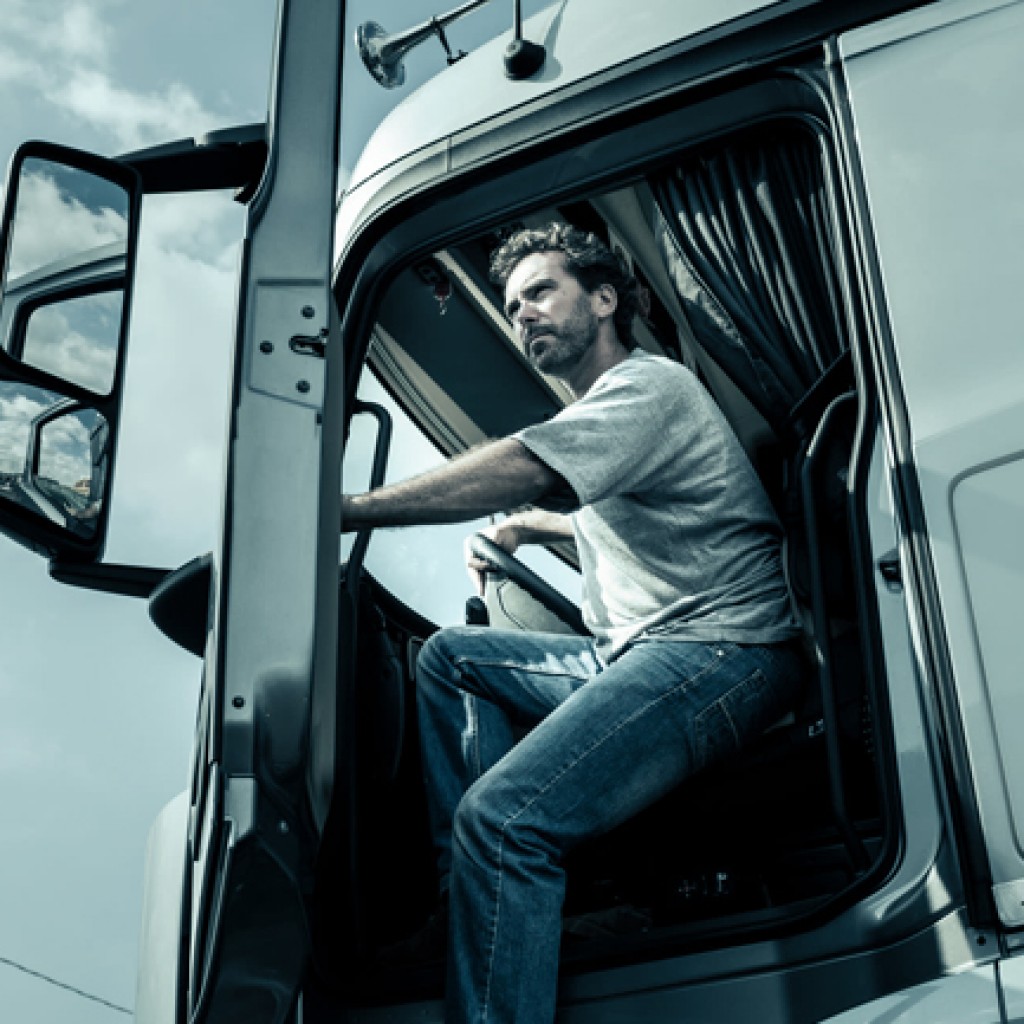Like the transport of perishable goods, the transport of agricultural vehicles is involved in the primary sector. In both cases, the link is based on the type of goods transported: fresh products, which include fruit and vegetables in the first, and the vehicles that process them in the second.
The parallelism continues if we consider the precautions required by the characteristics of the load. In fact, last time we discussed the importance of preserving the storage temperature of perishable goods using suitable equipment. Or, again, of the need for them, of activities such as labeling and correct packaging.

In the case of transport of agricultural vehicles, it is essential to carry out all operations with the greatest care. The reasons why this is necessary vary.
Our goal is to present, in the clearest possible way, all the useful information for organizing a transport of this type. A very brief focus on the history, types and uses of agricultural vehicles will be useful in defining all the possible characteristics of the load. Finally, we will focus on the legislation in force in this regard, and on the advantages associated with choosing to rely on professionals in the sector.
We start, as usual, looking at the goods with a magnifying glass.
BEFORE TRANSPORT. WHAT IS MEANT FOR AGRICULTURAL VEHICLES?
Today it is very difficult to imagine a farmer without his faithful companion, the agricultural machine. And yet, there was a moment in human history when work in the fields was not yet mechanised.
The era of entirely manual agricultural work ended only in 1850, when large companies began to equip themselves with ploughs, threshing machines and other steam-powered machines. 1895, on the other hand, marked the beginning of the diffusion of English and American machines for harvesting hay.
A few years later, the introduction of electricity facilitated the mechanization of farm work. Farmers ushered in the motorized mower and four-wheel tractor, along with loader wagons and manure spreaders.
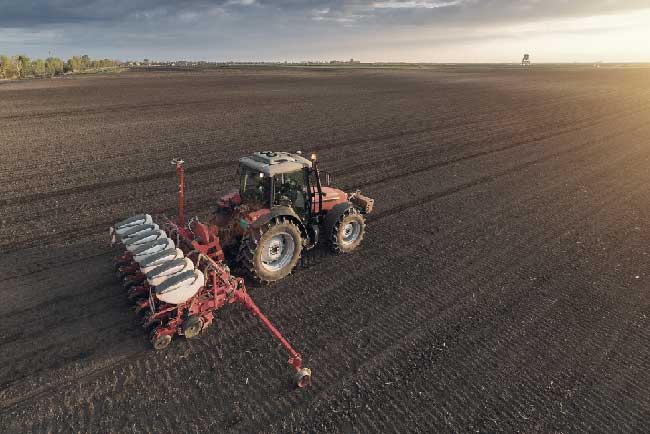
After almost two centuries of evolution, agricultural machines have become complete and efficient tools, most of the time capable of carrying out several operations at the same time.
In addition to the work activity itself, technological progress has also involved the logistics sector. It is, in fact, due to its evolution that it is now possible to transport agricultural machinery from one place to another, regardless of distance and size.
Therefore, it is no coincidence that the definition of transport of agricultural vehicles can be associated with the last of the three reasons, provided for by the law, for which they can circulate on the road:
- the movement of workers in the processes
- the transfer of agricultural products and substances for agricultural use
- own transport.
To learn more about this last aspect, it is necessary to close the history book and open the highway code. We do this in accordance with paragraph 2 of article 57, which hosts a classification of the machines in question. And, therefore, a list of potential goods that can be shipped by requesting an agricultural vehicle transport service.
Defined as “wheeled or tracked machines intended for use in agricultural and forestry activities”, agricultural machines are classified as follows:
- self-propelled. The category includes agricultural tractors and agricultural machinery with one, two or more axles. This includes, for example, vehicles designed to pull, push or transport agricultural products. Or, again, the machines predisposed for the application of equipment for the execution of agricultural operations;
- towed. The group includes, for example, machines for transporting equipment and accessories for mechanical-agricultural processes, pulled by self-propelled agricultural machines. Or, again, agricultural trailers, such as vehicles intended for loading and towed by agricultural tractors.
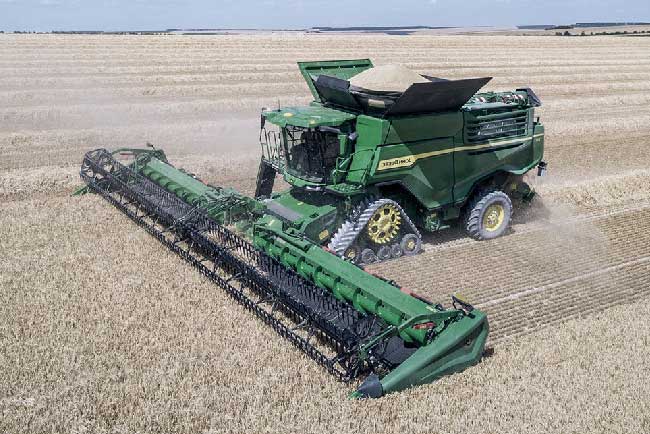
A further distinction in agricultural mechanics is that between driving machines and operating machines. The former are self-propelled and are used to operate, push or tow other machines; the latter, on the other hand, can be self-propelled, carried or towed, and are mostly used for agricultural operations.
The operating machines are, in turn, classified according to their uses. Let's summarize them briefly.
The different uses of operating machines
These are the main tasks that can be performed by operating machines:
- soil tillage. For example, the plough, the harrow and the digger take care of it
- sowing and transplanting. As their very name suggests, these are the functions of the seeder and transplanter
- distribution of fertilisers, pesticides and fungicides. Dusting machine and atomizer are examples of machines used for this activity
- collection, treatment and transport of products. The mower, the dryer and the agricultural trailer are, respectively, tools to be used in the three phases concerning the product
- feed distribution. It is the mixer wagon and the auger that take care of it.
The excursus just completed testifies to the presence, on the market, of a great variety of machines. When it comes to the transport of agricultural vehicles, it is therefore necessary to consider a varied type of goods. These are differentiated by:
- number of axles
- functions for which they are intended.
Given that paying the greatest attention is useful regardless, the two factors justify, in certain cases, even greater prudence. This occurs, for example, when the vehicle to be transported is very large. Or, again, when it has particularly delicate sections, for which it would be very expensive to obtain spare parts.
A lawn tractor and a John Deere 9360 are not exactly the same thing. The difference lies above all in the tools used for transport. Let's talk about it in detail.
TRANSPORT OF AGRICULTURAL VEHICLES: WHAT IS THERE TO KNOW?
There are mainly three types of trucks used to transport agricultural vehicles. In addition to the size, the choice depends on the number of vehicles to be transferred. In particular:
- semi-trailers are the best option if the agricultural vehicle to be transported is not particularly large (a lawn tractor, for example!)
- low-bed trucks are the most suitable means of transporting one or two standard vehicles
- car transporters are the best choice if there are many and/or rather bulky vehicles to be transported.
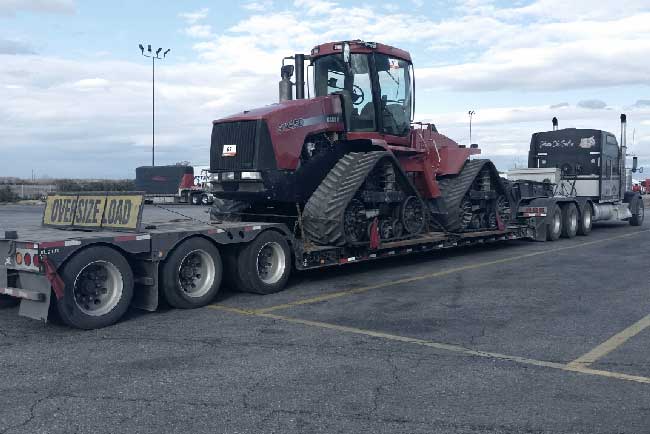
In the latter case, the transport of agricultural vehicles becomes a sub-category of the exceptional transport service. This circumstance makes a good knowledge of the legislation even more essential.
Keep an eye (again) on the Highway Code
According to articles 61 and 62 of the Highway Code, a vehicle or load is defined as exceptional when it exceeds certain size or mass limits.
Agricultural machinery may also fall into this category. The reference article is, in this case, the art. 104, which extends the validity of the rules in question also to self-propelled and towed vehicles circulating on the road.
There are, consequently, cases in which the transport of agricultural vehicles is regulated by the legislation envisaged for exceptional transport. This occurs when the vehicle to be transported is an operating, self-propelled or towed machine that exceeds at least one of the following parameters:
- width of 2,55 metres
- length of 12 meters
- height of 4 meters.
As regards the mass, in the case of wheeled agricultural machinery, the legislation to be followed changes according to the number of axles:
- if this is equal to one, the limit is 5 tons
- if it is equal to two, the limit is 8 tons
- if it is greater than or equal to three, the limit is 10 tons.
Lastly, if the vehicle is a tracked agricultural machine, its mass exceeding 16 tons makes it exceptional.
When the law is not respected, the sanctions foreseen range from 40 to 1697 euros, with reduction of points or suspension of the licence.
There is, however, a way to worry as little as possible. A solution that, once again, has the name and history of road transport professionals.
For the transport of agricultural vehicles, it is (still) advisable to rely on experts
The circumstances that require the shipment of agricultural vehicles are essentially two. The first has to do with the purchase or sale of the same, which could be located in a place far from the buyer's area of residence. On the other hand, the transport of agricultural vehicles is also the service that is right for those who need to get rid of a disused vehicle.
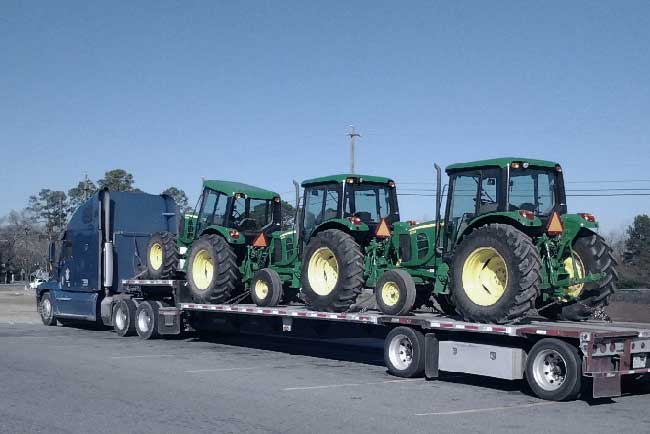
Whether it is one or the other context, it is appropriate that those who have made freight transport their main occupation take care of it. On different occasions, in fact, we have reiterated how the experience, the skills and the psychophysical predisposition of professional hauliers are always a guarantee of safety.
In the specific case of transporting agricultural vehicles, especially if the load is of considerable size, it is important that the haulier:
- has read the regulations carefully. Those involved in exceptional transport are well aware that numbers and parameters leave little room for improvisation. In addition to the direct experience gained in the field, the pages of the highway code are never missing in his toolbox
- has experience in planning itineraries. Bridges, roundabouts, viaducts, high sidewalks: a route, regardless of its specific characteristics, is always full of pitfalls. This is the reason why transports, especially those by car transporter or flatbed truck, must be planned with extreme care and competence. An expert haulier is certainly equipped with it
- knows the vehicle he will be driving. The use of low-bed trucks, for example, is linked to a very specific regulation. For this reason, it is advisable for it to be driven by a driver capable of minimizing potential risks. Among these, the possibility that the balance of the load is undermined by a curve or other types of stress
- is capable of handling loading and unloading operations. In the specific case of operating machines, being familiar with the manual handling of the goods is also important to preserve the extensions useful for carrying out the work for which they are intended.

These are just some of the many reasons that make the choice to entrust agricultural vehicle transport to a specialized company more than sensible.
At Trasauto Logistica, for example.
TRASAUTO LOGISTICA AT THE SERVICE OF THE AGRICULTURAL SECTOR
Our agricultural vehicle transport service is designed for companies, specialized workshops, producers and resellers of agricultural materials and vehicles.
The car transporters we have are used for the transport of all kinds of agricultural machinery and zootechnical systems. In forty years, we have had the pleasure of supporting customers in the transport of harvesters, tractors, tanks, silos and tomato harvesting machines.
Our team undergoes continuous training, which makes them capable of accompanying the customer in all phases of the transport (planning, route definition, etc.).
In case of exceptional transport, we make our know-how in the field of requesting and managing authorizations available to the customer. In all the others, we guarantee solid experience in itinerary planning, vehicle control and manual handling of goods of all weights and sizes.
Before each trip, we take care to support the customer in choosing the times and places of delivery. These, together with the size and weight of the vehicle, are among the factors that most affect the final cost.
In the case of cross-border shipments, our care is multiplied.
If you bought an agricultural vehicle abroad, we'll take care of the rest
There are cases in which buying abroad is convenient, in others less so.
In any circumstance, the goal of Trasauto Logistica is to guarantee the success of all operations.
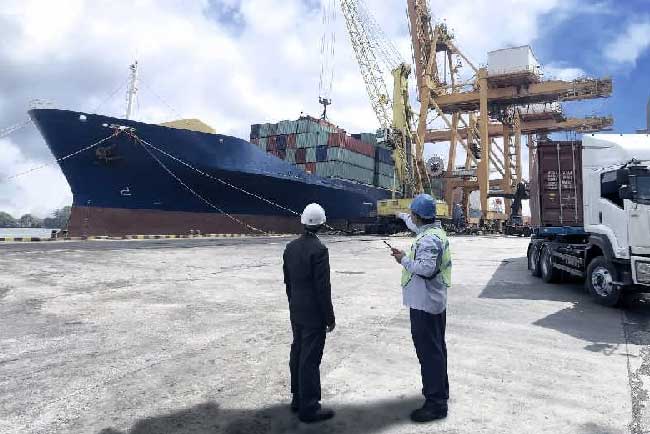
In the specific case of international routes, we have collected European and non-European journeys in our records. Here are the most popular routes:
- Germany-Italy
- Belgium-Italy
- Italy-France
- Spain-Italy
- Italy-Morocco
- Algeria-Italy
Transport abroad involves the management of additional documentation, which may include customs clearance.
Relying on Trasauto Logistica means delegating this last, for many truly enormous concern, to a team of professionals.
If you need to transport agricultural vehicles, just fill in our contact form. The staff in charge will quickly draw up a detailed estimate which will determine the amount you will have to spend in order for the transport to be completed safely and with maximum efficiency.
------------------------
Or for personalized assistance, you can call our offices in Italy at: +39 (0)828 1818150
or request more information also by e-mail: info@trasauto.com
Articles
Related
A MASSIVE SHIPMENT OF CARS ON…
Multimodal transport, in particular for the Italy-USA route, combines road…
EXPORT OF ESCARGOT ON THE FRANCE-IRELAND…
Our escargot transport service, particularly for the France-Ireland route, is…
MOVING A SUPERCAR ON THE FRANCE-MOROCCO…
Our Supercar transport service, particularly for the France-Morocco route, is…
THE TRANSPORT OF MEDICINES FRANCE-FLORIDA. ECONOMY…
Intermodal transport is an extremely flexible and cheap transport method,…
COMBINED FRANCE-CANADA TRANSPORT OF VINTAGE CARS.…
Using the services of Trasauto Logistica, in particular, when you…
INTERMODAL TRANSPORT TO AND FROM THE…
A long and complex journey, from France to America, always…
LUXURY TRANSPORT IN THE MIDDLE EAST.…
Depending on the routes, the timing, the necessary documentation, the…
CAR TRANSPORTER RENTAL FOR VEHICLE TRANSPORT.…
Investigation of the reference market, request for an estimate, vehicle…
PERISHABLE GOODS. WHAT ARE THEY AND…
Perishable goods include short-life food and pharmaceutical products. To avoid…
TRANSPORT OF VEHICLES AND BULKY OBJECTS:…
The transport of bulky vehicles and objects is an exceptional…
CAR TRANSPORT, HOW TO CHOOSE AND…
Car transport with car transporters has obvious organizational and economic…
HAVE YOUR ACCIDENTED CAR TRANSPORTED
When collecting and delivering an accidented or non-running car, it…
THE TRANSPORT SECTOR ADAPTS TO RENEWABLE…
When we think of building a more sustainable future, we…
THE TRANSPORT OF THE FUTURE: AN…
When it comes to the transport of the future, a…
MARITIME TRANSPORT. IS IT THE BEST…
In recent years, new technologies and the modernization of traffic…
BEFORE SHIPPING A VEHICLE. GUIDE AND…
To one’s own advantage and to the transporters’ who will…
HEALTHY EATING AND TRUCK DRIVERS. IS…
The importance of road transport for society and the economy…
LUXURY CAR. WHEN THE CAR IS…
The cost of the transport of a luxury car, with…
PROFESSION TRUCK DRIVER. FIND OUT THE…
Over the years, logistics has acquired great importance in the…
SUPERCAR: WHEN LUXURY HAS NO LIMITS
What to do if our supercar should reach a location…
Subscribe
Newsletter
Subscribe to our newsletter to stay in touch.


